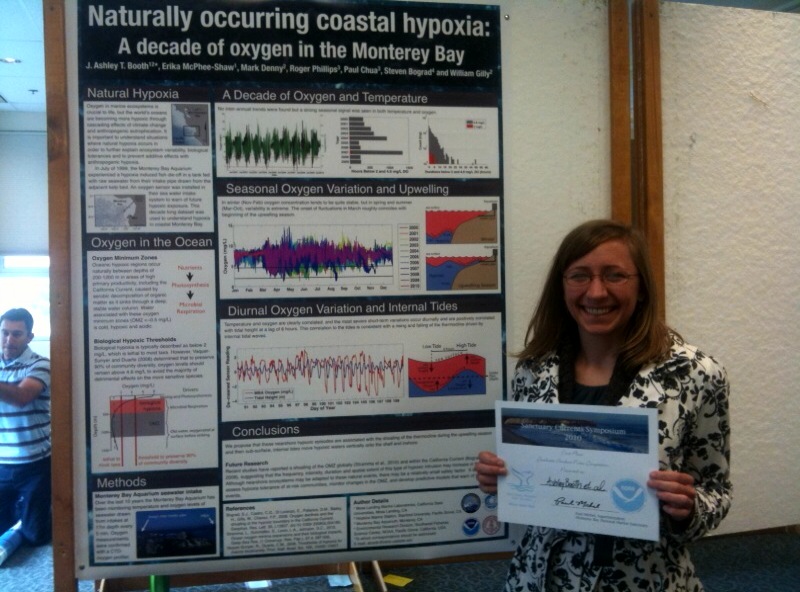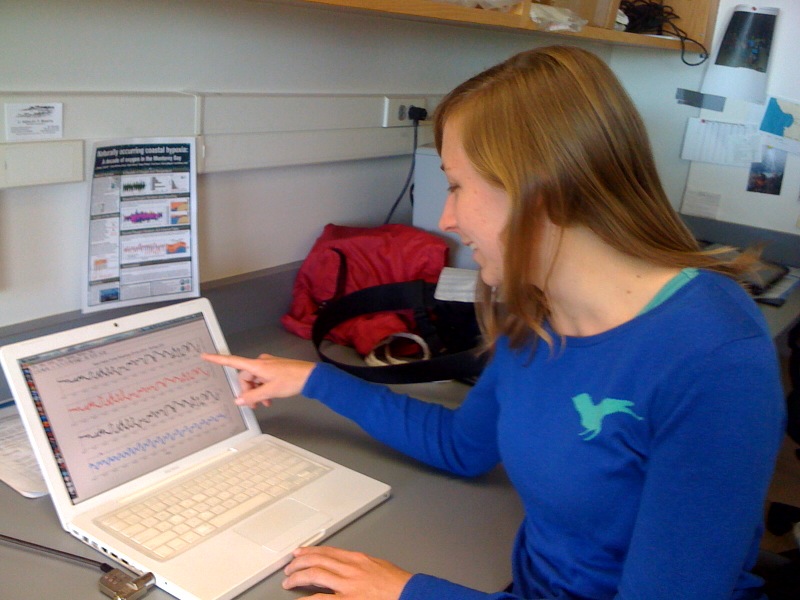
by Erin Loury
Breathing is a pretty key function in life, and most living things need oxygen to survive. This fact is just as true in the ocean as it is on land, meaning that areas of low oxygen water can severely stress marine organisms. Scientists and managers are particularly interested in low oxygen, or hypoxic, zones in coastal areas because they can be human-created: agricultural runoff can dump an excess of nutrients into the water, triggering a huge phytoplankton bloom. Not all of the phytoplankton get eaten, so these algae die and sink to the sea floor, where bacteria decompose them. These bacteria working on overdrive use up the oxygen in the water, creating a hypoxic zone.
But some areas of the ocean are just naturally low in oxygen. Much of this low oxygen water is very deep, but is occasionally carried to shallower, coastal areas through the process of upwelling (when surface water is blown offshore by wind and deep water rises up to the surface). Physical Oceanography student Ashley Booth is studying oxygen data from monitoring stations in a kelp forest near the Monterey Bay Aquarium to determine how often low-oxygen water from the Monterey Submarine Canyon flows into this important nearshore habitat. The goal of Ashley’s work is to look for patterns and determine what “natural” low oxygen concentrations look like – using this baseline, managers can then determine the impact the agricultural runoff has in further depleting marine oxygen levels.
Ashley recently won the award for best student poster at the Sanctuary Currents Symposium. You can also listen to Ashley discuss the importance of her research with a local radio station here (fast forward about halfway through to 2:10). Congratulations, Ashley!


